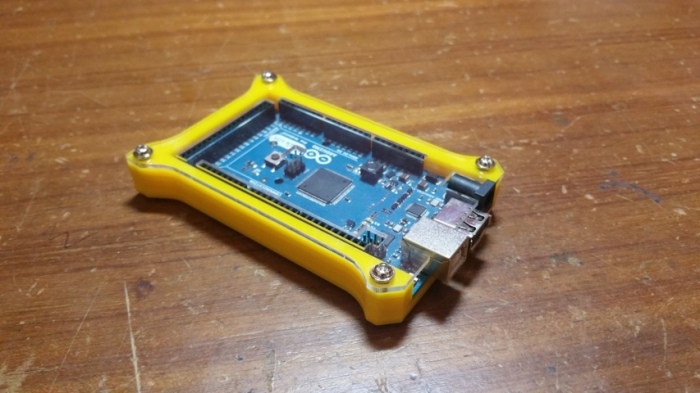I short my Arduino boards quite often, as unlikely as it seems. Mostly because my desk is littered with solder blobs and steel rulers and other desperate conductors of electricity. Although, the shorts haven’t caused anything more than harmless reboots, I figured I should get a case before my boards are fried. So I get on my usual online marketplaces seeking nifty cases for my Arduino Mega ADK and Uno. In the meanwhile, my boards are seeking shelter in a “tiffin box”. Given my very choosy nature, all the cases I came across on the internet were either utterly bland with no consideration to aesthetics of my liking or simply out of my budget. What do I do? I do what I always do, make my own. Having scrolled through pages of different products offered by a variety of sellers over a range of prices, I set some fundamental design rules based on my observations.
1) Most products use the mounting holes on the Arduino board to secure it to the case using screws and if you ever took a close look at the holes, you can see they are uncomfortably close to exposed solder pads and other active components. Another potential issue I found with screw-mounting the board is that if you ever drop the case accidentally, chances are, the screws might transfer the impact stresses to the board which does not sound very good. In my design, I constrain the board by slotting the protruding female headers through the top plate of the case, nothing “holds” the board, rather it simply “floats” in a tight tolerance space on foam padding. When you do drop the case, the impact stress are likely to travel through the case’s outer structure and not the board itself.

